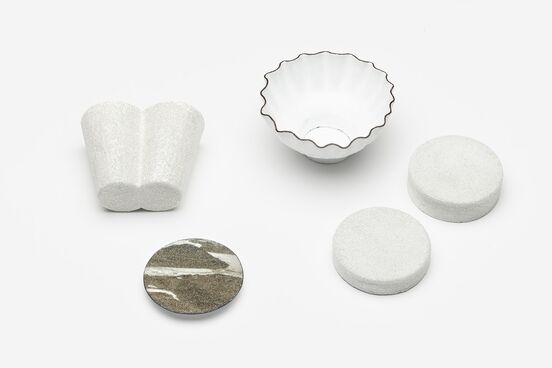A visit to Antarctica was the inspiration behind this elegant body of work. In Ice Mosaic, jeweller Kirsten Haydon explores the history of the vast and frozen continent, as well as the experiences of various visitors to the area through the notion of the souvenir.
Although Antarctica has no permanent residents, it accommodates a number of utilitarian buildings - predominantly research bases for scientists, and a small number of huts, erected by early explorers such as Scott and Shackleton. Echoes of these manmade structures - both exteriors and interiors - can often be found in elements of Haydon's work with regards to form, applied imagery and connecting components.
"My research continues to be focused on and inspired by the Antarctic-it mediates and focuses my act of making while allowing me to reflect broadly on the world we live in."
Haydon uses a variety of techniques and The Ice Objects have a stillness; a quality reminiscent of objects long untouched and unused - a sense of the past and isolation. However, Haydon also captures the essence of an elemental beauty, deftly expressed through the restrained use of colour, simple forms, and attention to surface detail. Paradoxically, in order to achieve the effects of ice and snow, each piece undergoes multiple kiln firings, until the desired finish is achieved. Despite their diminutive scale, and partially due to the luminescent surfaces, these works cleverly hint at an environment that is magnificent and harsh, as well as grand in scale.
--
Kirsten Haydon, originally from Auckland, now works in Melbourne, where she is an Early Career Academic Fellow at RMIT University. She was the first jeweller to become an Antarctic Arts Fellow in 2004.

